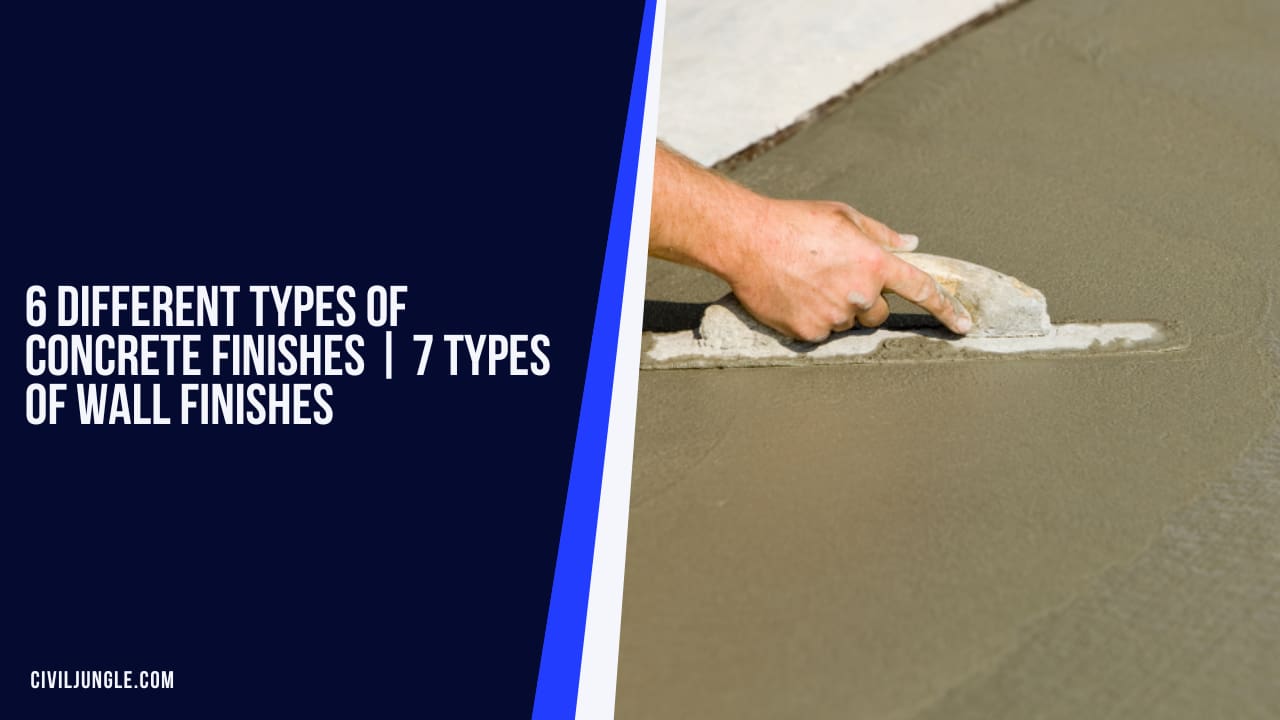
Introduction of Concrete Finishing
Concrete is a versatile building material which is widely used in the construction industry. Concrete is a mixture of cement, coarse aggregate, fine aggregate and water in the appropriate proportion.
Finishing is one of the most important parts after the casting of the concrete because it gives aesthetical view to the surface of the concrete. Finishing of the concrete surface is the process of compacting, levelling and smoothing the surface of the concrete.
The finishing of the top surface of the concrete layer can be done in several ways. One of the most common and widely used finish is float and Troweled finished surface.
In this article, you will get to know about the different types of concrete finish and the types of finishes used for walls and how to smooth Concrete.
6 Different Types of Concrete Finishes
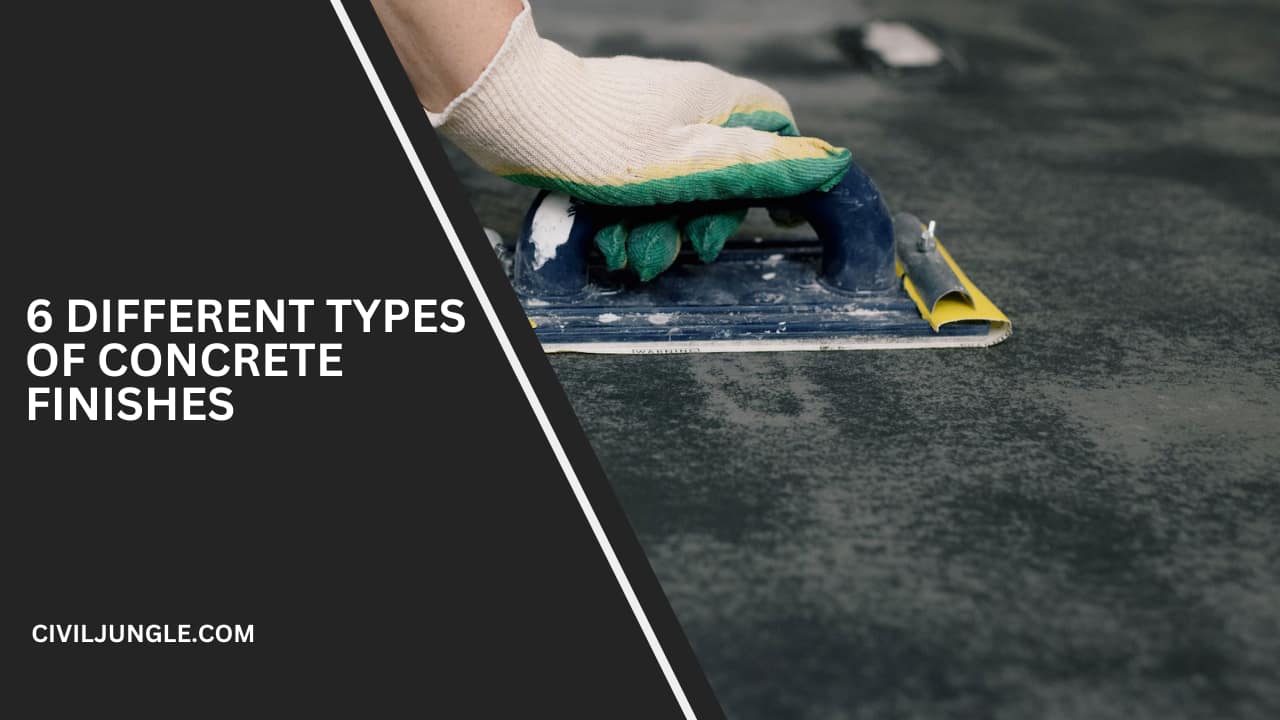
The Concrete wall finishing Techniques which are used are as follows
- Float and Troweled Finish
- Broom Finish
- Salt Concrete finish
- Stamped Concrete Finish
- Polished concrete
- Exposed Aggregate Finish
A detailed description of the concrete wall finishes are as given below.
#1. Float and Troweled Finish-
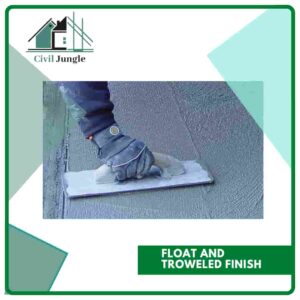
When the concrete is cast in the required form, the top layer of the concrete can be worked with a trowel to create a smooth surface. Generally, the hand trowels which has a flat blade with the handle are used to make the top layer of the concrete surface smooth.
Troweled concrete finish is used in any kind of surface such as indoor and outdoor. Different types of decorative effects can also be given with the trowel finish concrete surface.
Troweled finish concrete surface is widely used in the pathways of the gardens because of its high resistance to abrasion, weather conditions, and water penetration.
Troweled finish concrete has High adhesion due to which it is used not only in horizontal surfaces but also in vertical surfaces. Troweled finish surface is very easy to clean and maintain and it can also be customized with different types of colours and textures.
#2. Broom Finish-
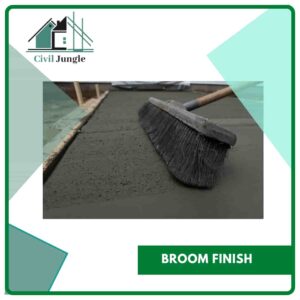
Broom finish concrete is also known as brushed concrete. In this type of finishing, the broom is used to develop the sleep resistance surface of the concrete.
Broom finishes surface is widely used because it provides high traction surface and more durability. Broom finish surface is slip-resistant and very affordable to construct.
Broom finish concrete surface is used around the swimming pools area because it provides a non-slip surface which is very important as per the safety is concerned. Broom finish surface is one of the best types of concrete finishes for driveways.
Broom finished concrete surface does not give decorative look. In the broom finish surface, run the Broom in the direction of the slope which will help to quickly drain off water from the surface.
#3. Salt Concrete Finish-
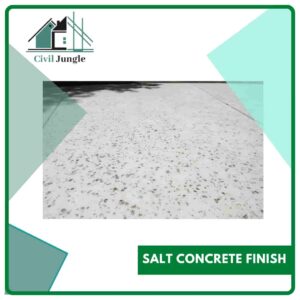
Salt concrete finish is one of the older and conventional decorative finish techniques. The salt finish is more decorative as compared to the broom finish concrete.
If you are looking for a decorative concrete finish surface then Salt Finish concrete surface is one of the best options which can be used in the concrete finishing.
In the case of the salt finish to the concrete, the salt particles are spread over the most surface of the concrete and then press the grains to the surface using a roller or float.
After the final setting time of the concrete, the salt grains are power wash. After that there is a speckled pattern is formed which makes the surface decorative.
#4. Stamped Concrete Finish-
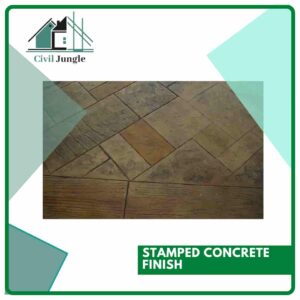
Stamped concrete is one of the innovative ways of finishing the surface of the concrete. The stamped concrete is also known as imprinted concrete or textured concrete. Stamped concrete is the best choice for the walkways, driveways, and outdoor paving.
There are different types of patterns are available in the stamped concrete finish such as straight box type patterns, irregular patterns, and circular patterns, etc. The method of concrete stamping is very convenient and fast.
Different colour pigment powder is also used to spray on the surface of the stamped concrete. Stamped concrete finish is very cheap as compared to other types of finishes.
#5. Polished Concrete-
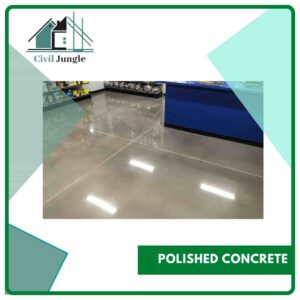
The polished concrete surface is made by the process of grinding and polishing. The polished concrete surfaces are highly durable and required less maintenance.
The polished concrete is made with the help of existing building materials and it helps to improve the natural lighting of the buildings because it has high reflectivity which helps to save energy by reducing artificial lighting.
The polished concrete surface is generally used in warehouses, retails offices, buildings private residence and hotels, etc. The polished concrete surface looks like a smooth surface of the glass which is completely safe for walking.
#6. Exposed Aggregate Finish-
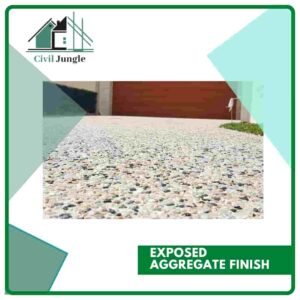
Exposed aggregate finish is one of the Best and widely used floors finishes in the warehouses, garages, living rooms and galleries, etc. The exposed aggregate finish has adequate compressive strength so that it can be also used for heavy traffic.
Exposed aggregate finish is durable and resists wearing. Because of the exposed aggregate at the surface level, it gives a good aesthetical view.
7 Types of Wall Finishes
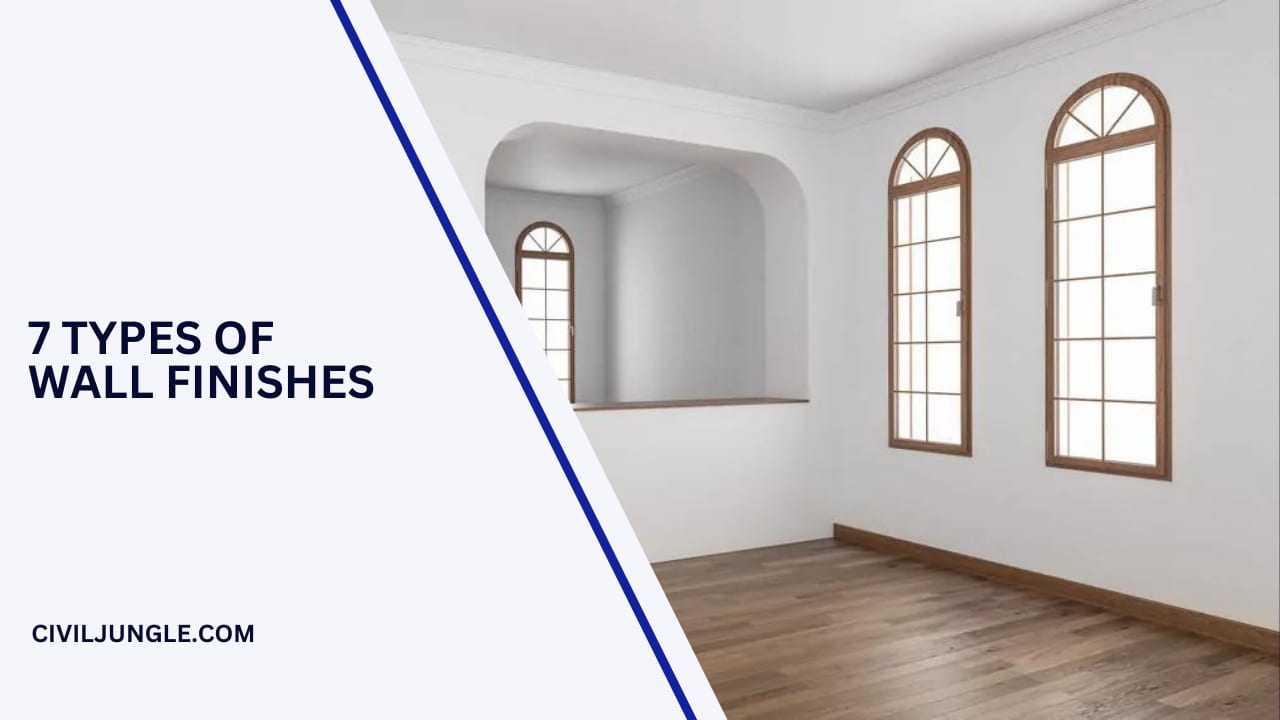
- Wall finishing is a finish which is given to the wall to enhance the interior and the exterior look of the building.
- Wall finishes help to provide a decorative look to the building components which includes all the structural member’s pipes and wires.
There are different concrete wall finishes types which are used in the structures are as follows
- Wood Panelling Wall Finish
- Cement Plastering Wall Finish
- Tiles Cladding Wall Finish
- Coral Wall Finish
- Plaster of Paris Wall Finish
- Stained Glass Wall Finish
- Gypsum Plaster Wall Finish
The detailed description of the wall finishes are given below
#1. Wood Panelling Wall Finish-
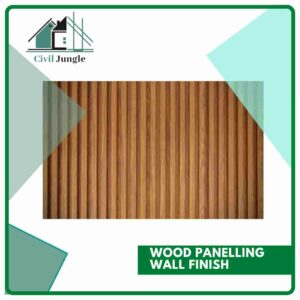
The wood panelling wall finish is a decorative finish which is done with the help of wooden panels on the walls. The different types of design wooden panels are used in the wood panelling wall finish.
#2. Cement Plastering Wall Finish-

Cement plastering wall finish is one of the most commonly used finishing technique in the interior of the buildings. Cement plastering wall finish is economical as compared to other types of wall finishes.
Cement plaster is prepared with the mixture of cement, sand and water in the appropriate proportion which is applied manually to achieve a smooth surface.
#3. Tiles Cladding Wall Finish-
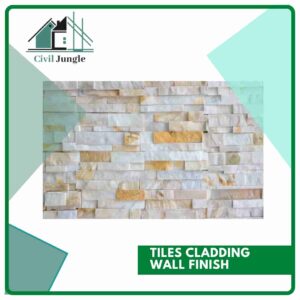
The different types of tiles are used in the tile cladding wall finish which enhances the interior of the structure. The type of tile which is used in the interior depends upon the location where it is to be applied.
#4. Coral Wall Finish-
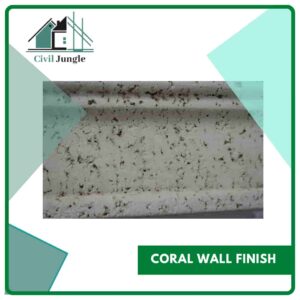
The coral wall finish is similar to the gypsum plaster wall finish and plaster of Paris wall finish. Coral is the name of the material which is used in the plastering it gives a rough edgy finish to the surface.
#5. Plaster of Paris Wall Finish-
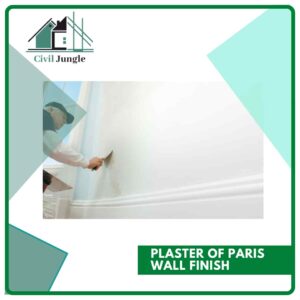
The Plaster of Paris wall finish is used in the interior of the structure which gives a smooth surface to the walls. Plaster of Paris consists of white powder which hardens when water added to it.
#6. Stained Glass Wall Finish-

Stained glass wall finish involves a lot of creative work in which the glass is decorated with frosting and glass resting with suitable colours. The stained glass finishes are used on the walls and ceilings.
#7. Gypsum Plaster Wall Finish-
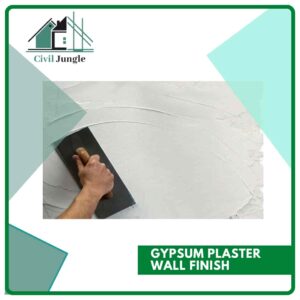
Gypsum plaster is more durable and final as compared to plaster of Paris finish. Gypsum plaster gives a smooth finish to the interior walls. Gypsum plaster is very easy to apply and offers better acoustics.
How to Finish Concrete?

Concrete finishing is the process in which a smooth and durable surface is provided. The step by step procedure to smooth the concrete are as follows
Step 1. Pour the Concrete in the Required Size:
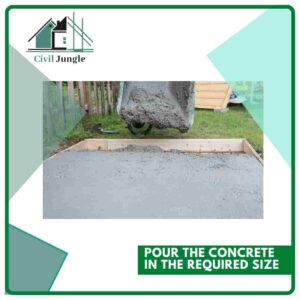
Mix the concrete properly in the mixing machine as per the required grade. Then pour the concrete in the required size and compact it properly so that all the air void will be removed.
Stp 2. Smoothen the Surface of the Concrete:
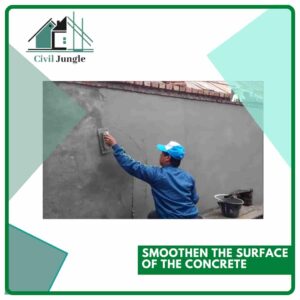
The wooden travel for float should be used to smooth the surface of the concrete. This is a very complex work which requires skilled workmanship.
Step 3. Use of Broom to Finish the Surface of the Concrete:
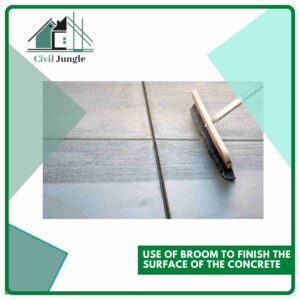
Broom is commonly used to finish the top surface of the concrete which will help to make the concrete surface slip-resistant.
Step 4. Process of Curing:
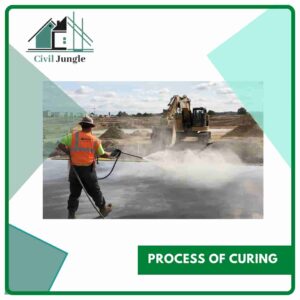
Curing is one of the most important parts after the process of finishing. The simplest method which is used for the curing is too with the concrete surface and cover it with plastic sheeting.
3 Types of Concrete Finish Machines
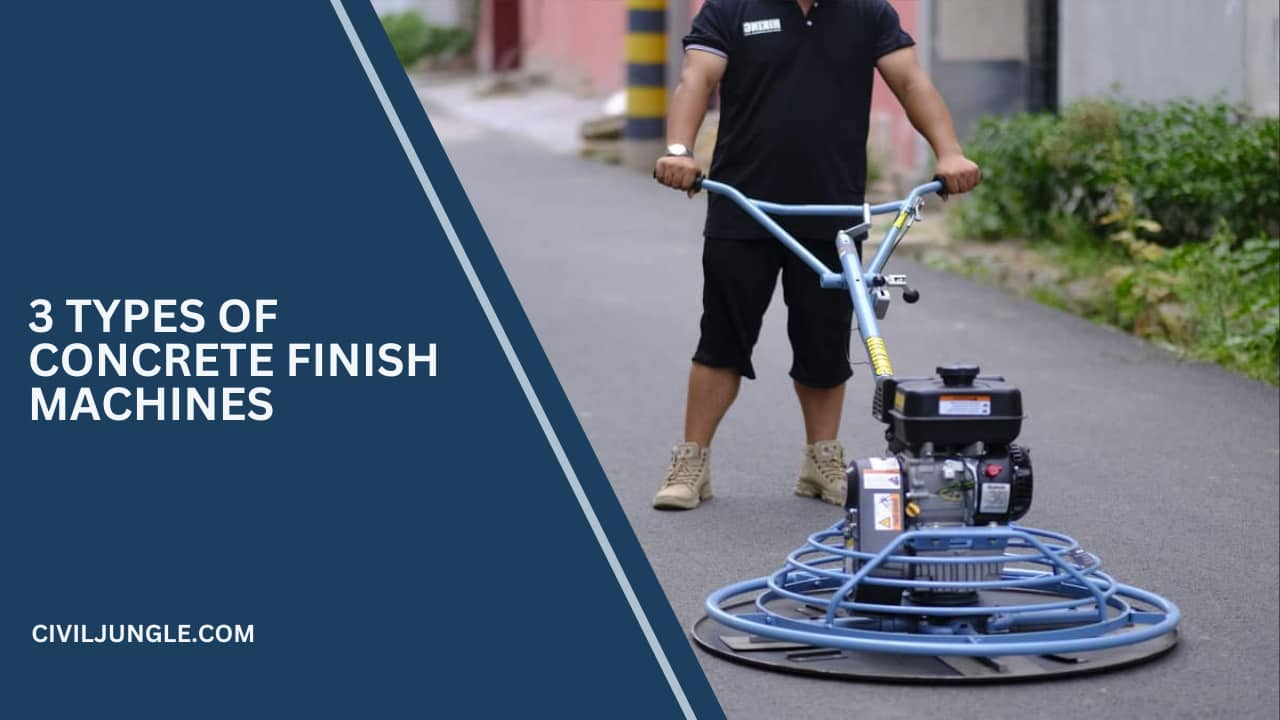
The different types of concrete finishing equipment which are used to surface the concrete as follows
- Vibratory Screed Finisher
- Mechanical Tube Finisher
- Mechanical Tining Machine
#1. Vibratory Screed Finisher-
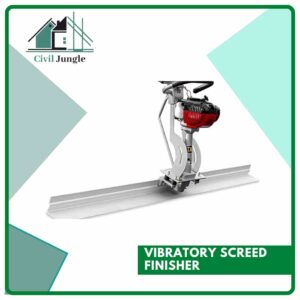
The vibratory screed finisher consists of a Truss frame which has a base with of about 1 foot. It is widely used in the road construction for the finishing work of the pavement.
#2. Mechanical Tube Finisher-
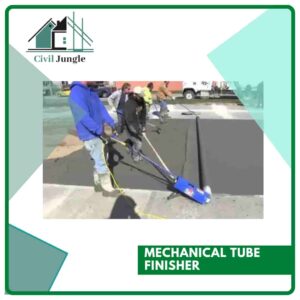
Mechanical to finisher longer tube which is used to finish the surface of the concrete pavement. The mechanical to finisher consists of a single or multiple rotating Strike.
#3. Mechanical Tining Machine-
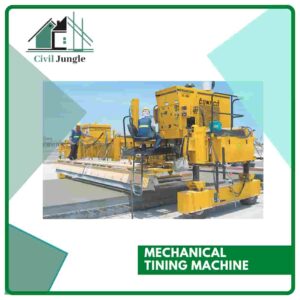
Tining is a process in which uniform transverse grooves are formed on the surface of the concrete. The process of tining can be done by both manually by hand timing and with the help of mechanical tining machine
The tools which are used in the concrete finishing are as follows
- Bull float
- Concrete groover
- Steel trowel
- Edging tool
- Straight Board
- Square shovel
14 Types of Concrete Finishes for Driveways
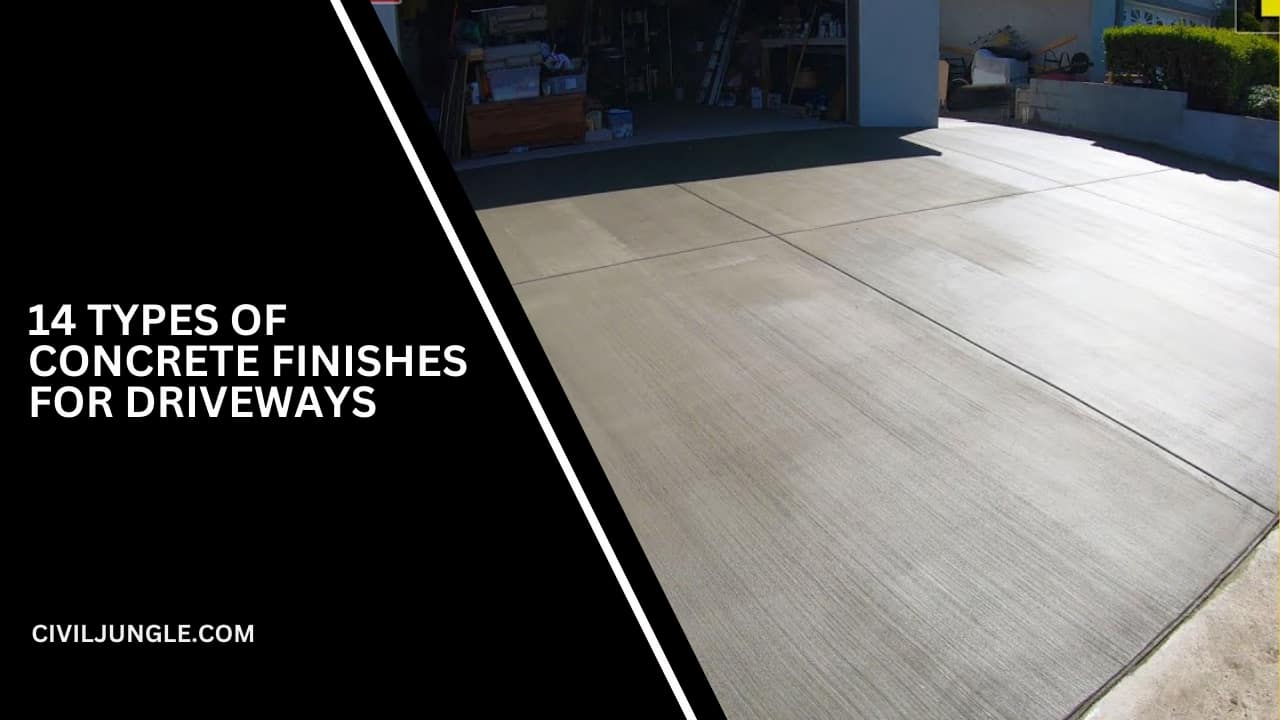
The different types of concrete finishes which are used for the driveways are as follows
- Slate Impression Concrete Driveway
- Exposed Aggregate Concrete Driveway
- Coloured Concrete Driveway
- Cut Concrete Driveway
- Stamped Concrete Driveway
- Textured Concrete Driveway
- Imprint Concrete Driveway
- Paving Border Concrete Driveway
- Plain Concrete Driveway
- Broom Finishing Concrete Driveway
- Polished Concrete Driveway
- Stencil Concrete Driveway
- Driveway with Concrete Blocks and Grass
- Rock Salt Finish Concrete Driveway
Frequently Asked Questions (FAQs)
What Is Concrete Finishing and Why Is It Important?
Concrete finishing is the process of compacting, leveling, and smoothing the surface of cured concrete. It is crucial because it enhances the aesthetic appeal and durability of the concrete surface, making it suitable for various applications.
What Are the Most Common Types of Concrete Finishes?
The most common types of concrete finishes include Float and Troweled Finish, Broom Finish, Salt Concrete Finish, Stamped Concrete Finish, Polished Concrete, and Exposed Aggregate Finish.
How Do I Choose the Right Concrete Finish for My Project?
The choice of concrete finish depends on factors such as the intended use of the surface, desired appearance, budget, and maintenance requirements. For example, Broom Finish is ideal for slip resistance, while Polished Concrete is preferred for its high reflectivity and durability.
What Tools Are Commonly Used for Concrete Finishing?
Common tools for concrete finishing include Bull Floats, Concrete Groovers, Steel Trowels, Edging Tools, Straight Boards, and Square Shovels. Each tool serves a specific purpose in achieving the desired finish.
How Is a Troweled Concrete Finish Applied?
A troweled finish is applied by using a hand trowel to smooth and polish the surface of the concrete after it has been poured. This method is suitable for both horizontal and vertical surfaces.
What Is the Process of Achieving a Broom Finish?
A broom finish involves dragging a broom over the concrete surface to create a textured, slip-resistant finish. This method is commonly used around pools and driveways to enhance safety.
Can I Use Salt Finish Concrete in Outdoor Areas?
Yes, salt finish concrete can be used in outdoor areas. It provides a decorative appearance and is suitable for surfaces like patios and walkways. However, it’s important to properly seal the surface to prevent salt damage over time.
What Is Stamped Concrete and How Is It Created?
Stamped concrete, also known as imprinted or textured concrete, involves using stamps or molds to imprint patterns and textures onto the surface of freshly poured concrete. Different colors and patterns can be used to mimic natural materials like stone or brick.
How Do I Maintain a Polished Concrete Surface?
Polished concrete surfaces require minimal maintenance. Regular sweeping and occasional mopping with a mild cleaner are usually sufficient. For added shine, periodic re-polishing may be needed.
What Are the Benefits of Using Exposed Aggregate Finish?
Exposed aggregate finish offers excellent durability and a decorative look. It is resistant to wear and can handle heavy traffic. The aggregate at the surface level enhances both functionality and aesthetic appeal.
How Do I Finish Concrete Effectively?
Effective concrete finishing involves pouring the concrete, leveling and smoothing the surface, applying any desired texture or pattern, and curing the concrete properly to ensure strength and durability.
What Types of Concrete Finish Machines Are Available?
Types of concrete finish machines include Vibratory Screed Finishers, Mechanical Tube Finishers, and Mechanical Tining Machines. Each type is designed to handle specific finishing tasks and improve efficiency.
Are There Different Concrete Finishes Specifically for Driveways?
Yes, various concrete finishes are suitable for driveways, including Slate Impression, Exposed Aggregate, Colored Concrete, Stamped Concrete, and more. Each finish offers different aesthetic and functional benefits.
How Does the Curing Process Affect Concrete Finishing?
Curing is essential for achieving the strength and durability of the concrete. It involves keeping the surface moist and covered to prevent rapid drying and cracking. Proper curing ensures the finished surface performs well over time.

